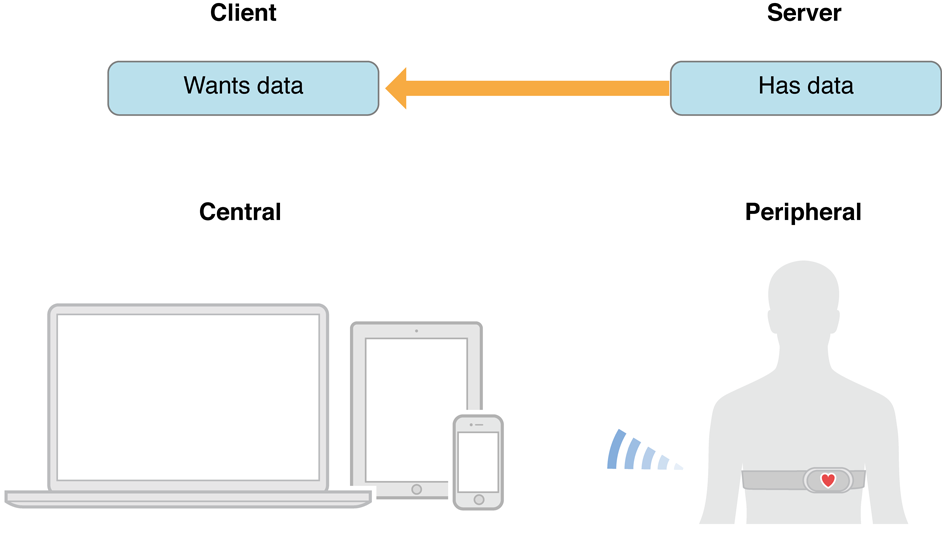标签:style blog http color os io 数据 for
The client–server model of computing is a distributed application structure that partitions tasks or workloads between the providers of a resource or service, called servers, and service requesters, called clients.[1] Often clients and servers communicate over a computer network on separate hardware, but both client and server may reside in the same system. A server host runs one or more server programs which share their resources with clients. A client does not share any of its resources, but requests a server‘s content or service function. Clients therefore initiate communication sessions with servers which await incoming requests. Examples of computer applications that use the client–server model are Email, network printing, and the World Wide Web.
server端是提供服务和数据
client向server发送请求来获取数据
就如在iOS 中 Core Bluetooth 中提到的关于central and peripheral devices所扮演的角色一样
There are two major players involved in all Bluetooth low energy communication: the central and the peripheral. Based on a somewhat traditional client-server architecture, a peripheral typically has data that is needed by other devices. A central typically uses the information served up by peripherals to accomplish some particular task. As Figure 1-1 shows, for example, a heart rate monitor may have useful information that your Mac or iOS app may need in order to display the user’s heart rate in a user-friendly way.

Client–server model,布布扣,bubuko.com
标签:style blog http color os io 数据 for
原文地址:http://www.cnblogs.com/scaptain/p/3916070.html